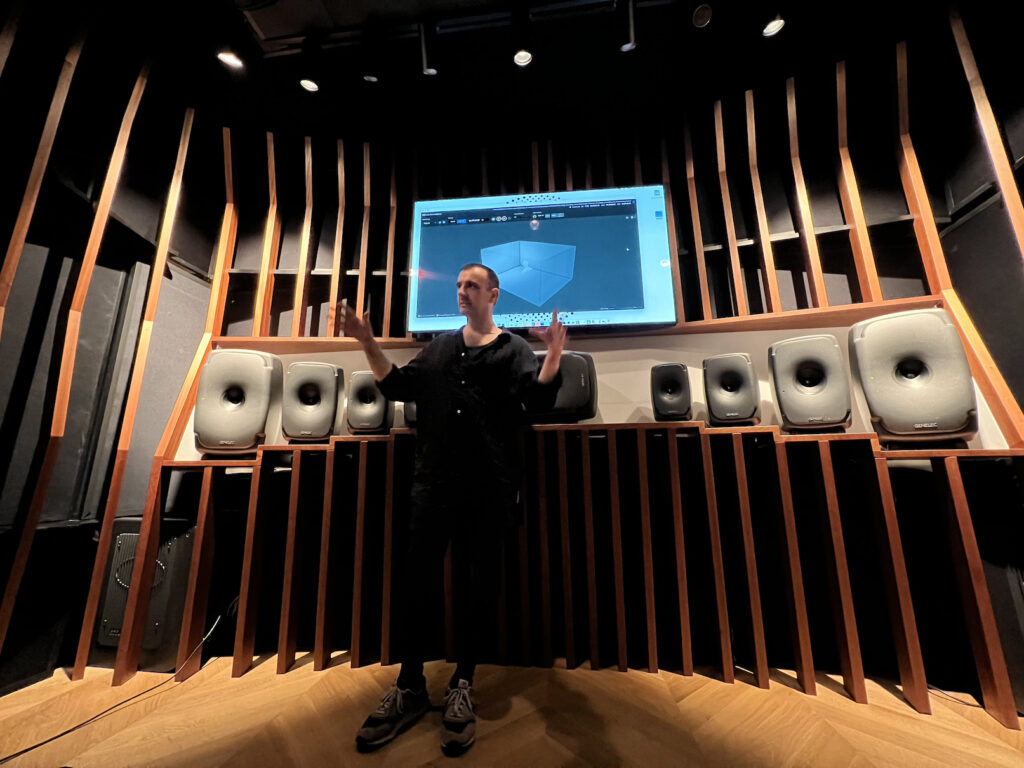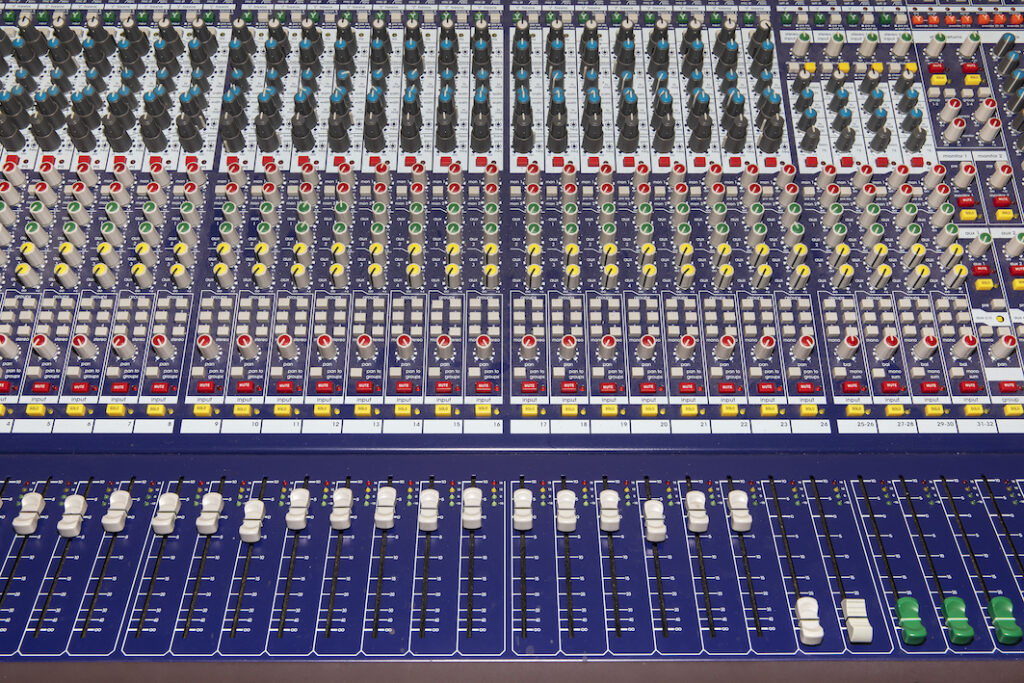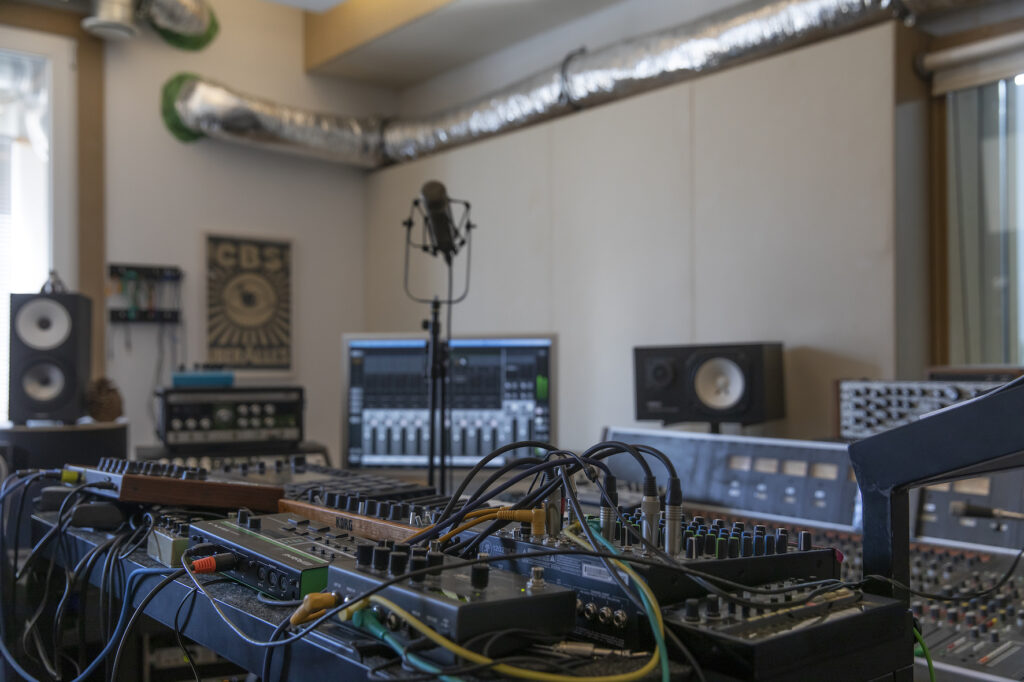
We had the pleasure to personally experience the Spatial Audio with Dolby Atmos in the Berlin-based Immersive Lab which is perfectly equipped for this new technological sound innovation. Sound engineer Eric Horstman and Modeselector’s artist Sebastian Szary gave us in-depth insight into this new immersive sound technology.
Dolby Atmos delivers a next-level, multidimensional sound experience that immerses you in each music track with sonic details like never heard before. With speakers facing you from every direction, the sound flows around you, over you, and within you. It feels like you’re right in the middle of the action – Spatial Audio captivates your attention with wonderfully clear, precise, and multilayered sounds. It provides a unique experience of being right there in the studio or the live venue – depending on the artist’s musical intention – to encounter each level of their creative approach within the production. The audio experience is so visceral that as the energy of the music crescendos and declines, so does your heartbeat, flowing between moments of adrenaline and relaxation.

First of all, thank you for allowing us to experience Spatial Audio firsthand here at the studio. What triggered you to produce your latest album “MORE D4TA” completely differently from your previous productions? Could you tell us more about the process?
首先,感谢您在苹果空间音频演示期间的经历。谈到音乐行业的那一刻,对于每一个用户来说,我们都想知道是什么触发了你制作这张专辑的方式,与平时完全不同?你能告诉我们更多关于这个过程吗?
Hello Keyi – the topic of listening which is beyond the ‘standard’ stereo has developed constantly in the past decades. Already in 1881, there were stereo experiments of this kind with electro-acoustic transmissions from room A to room B. Most of the time, it failed because of the improper replay of the sound due to inadequate sound systems. There have been these game-changing moments quite often, whether in terms of video projection, photography, acoustic imaging, or even in taste and smell. Now with Spatial Audio, films, concerts, studio productions, and even speeches – which were previously perceived “only” in mono – suddenly give the listener the impression of being in the middle of the action. Next to the composition, sound has the highest priority for Moderat. Our effort to deal with sound is usually higher than with the composition itself. Well, of course, there are always exceptions.
在过去的几十年里,超越 “标准 “立体声的听觉主题不断发展。早在1881年,就有这样的立体声实验,从A室到B室的电声传输。大多数情况下,由于声音的适当显示(音响系Keyi你好–在过去的几十年里,超越 “标准 “立体声的听觉话题不断发展。早在1881年,就有这种从A室到B室的电声传输的立体声实验。大多数情况下,由于音响系统不完善,声音重放不到位而失败。无论是在视频投影、摄影、声学成像,甚至是在味觉和嗅觉方面,都经常出现这种改变游戏规则的时刻。现在有了空间音频,电影、音乐会、演播室制作,甚至演讲–以前 “只 “用单声道感知–突然给听众以身临其境的感觉。除了作曲,声音对Moderat来说是最优先的。我们在处理声音方面的努力通常比作曲本身要高。嗯,当然,总有例外。

Speaking producer-to-producer, how would you convince another artist to follow your path in music production?
说到制作人与制作人之间的关系,你会如何说服另一位艺术家走你的路来制作另一张专辑?
Sometimes it is not necessary to produce in this way, but if you have the possibility to unlock this new audio level, then we always recommend that. Probably not every production is suitable for this, but to our productions it offered a good canvas to start with.
有时没有必要走这条路,但如果你得到了可能性,你可以尝试打开这个新的水平,那么我们总是建议这样做。 可能不是每个作品都适合这样做,但我们的作品提供了一个很好的起始位置。
When you first listened to your new album in Spatial Audio what did you think?
当你第一次听到你的新专辑使用空间音频时,你的想象是什么?
When listening, the depth that we always imagined when we produced it is redefined once again. In our studio, we produce in a classic stereo listening environment. During the first listening session with Spatial Audio we were really like: “Yes, every sound has got its right place now!”
当聆听时,我们在制作时总是想象的深度再次被重新定义。在我们的工作室里,我们在一个经典的立体声聆听环境中进行制作。在第一次使用空间音频的聆听过程中,真的很像。”是的,每一个声音都有它正确的位置,现在
IIn your opinion, what’s the main advantage to using Spatial Audio?
在您看来,使用空间音频的主要原因是什么?
It’s about subtly distributing the acoustic info better and reinforcing the sound image. Perhaps it is also a distortion of the “classic” or “normal” listening habits. But as I said, if the music allows it, then you should definitely try this approach.
这是为了更好地分配声学信息和加强图像。也许这也是对 “经典正常 “听觉习惯的一种扭曲。但正如我所说,如果音乐允许,那么你肯定应该尝试这种方式。
How would you compare the bass response from Spatial Audio versus normal productions?
您如何比较Audio Spatial的低音响应和正常的聆听方式?
If you take a step back from the classic stereo monitoring situation, and mix or listen to a Dolby system with a subwoofer, you can also use this subwoofer channel more as an effect layer. The bass management therefore refers to all speakers and is redistributed, so to speak. As a result the bass does not come out in the classic ‘everything comes from the front and in the middle’-style, but is more distinctively and deliberately distributed in the environment.
如果你从经典的立体声监听情况退后一步,混合或聆听带有低音炮的杜比系统,你也可以将这个低音炮通道更多地用作效果层。因此,低音管理是指所有的扬声器,可以说是重新分配的。这样做的后果是,在低音分布中,这种经典的 “一切来自前面和中间 “的时刻在环境中的分布更多。

Listen to Moderat’s “MORE D4TA” here.
Learn more about Spatial Audio here.






